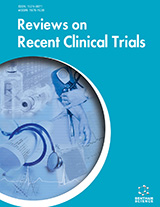Abstract
The gut–liver axis model has often explained liver disease physiopathology. Among the latter we can mention Non-Alcoholic Liver Steatosis (NAFLD), Liver Steatohepatitis (NASH), liver cirrhosis. In this frame an altered Intestinal Permeability (IP) is the gate for antigenic/toxic substances from gut lumen until target organs such as liver in NAFLD. Altered intestinal permeability was discovered almost forty years ago as consequence of acute and chronic alcohol ingestion. Alcohol Liver Disease (ALD) is a systemic pathology whose beginning and end belong to the intestine. Several recent evidences from the literature show how gut microbiota composition can be altered by alcohol, affects IP and can be modulated by several nonpharmacological and pharmacological agents, becoming the target for ALD treatment. In this review we describe the definition of ALD, gut microbiota composition in healthy and ALD, definition and role of IP in ALD physiopathology and emerging evidences on gut microbiota modulation in ALD treatment from preliminary clinical and non-clinical studies.
Keywords: Gut microbiota, alcohol, intestinal permeability, lipopolysaccharide, antibiotics, probiotics.
Reviews on Recent Clinical Trials
Title:Gut Microbiota and Alcoholic Liver Disease
Volume: 11 Issue: 3
Author(s): Emidio Scarpellini, Mariana Forlino, Marinella Lupo, Carlo Rasetti, Giammarco Fava, Ludovico Abenavoli and Adriano De Santis
Affiliation:
Keywords: Gut microbiota, alcohol, intestinal permeability, lipopolysaccharide, antibiotics, probiotics.
Abstract: The gut–liver axis model has often explained liver disease physiopathology. Among the latter we can mention Non-Alcoholic Liver Steatosis (NAFLD), Liver Steatohepatitis (NASH), liver cirrhosis. In this frame an altered Intestinal Permeability (IP) is the gate for antigenic/toxic substances from gut lumen until target organs such as liver in NAFLD. Altered intestinal permeability was discovered almost forty years ago as consequence of acute and chronic alcohol ingestion. Alcohol Liver Disease (ALD) is a systemic pathology whose beginning and end belong to the intestine. Several recent evidences from the literature show how gut microbiota composition can be altered by alcohol, affects IP and can be modulated by several nonpharmacological and pharmacological agents, becoming the target for ALD treatment. In this review we describe the definition of ALD, gut microbiota composition in healthy and ALD, definition and role of IP in ALD physiopathology and emerging evidences on gut microbiota modulation in ALD treatment from preliminary clinical and non-clinical studies.
Export Options
About this article
Cite this article as:
Scarpellini Emidio, Forlino Mariana, Lupo Marinella, Rasetti Carlo, Fava Giammarco, Abenavoli Ludovico and De Santis Adriano, Gut Microbiota and Alcoholic Liver Disease, Reviews on Recent Clinical Trials 2016; 11 (3) . https://dx.doi.org/10.2174/1574887111666160810100538
| DOI https://dx.doi.org/10.2174/1574887111666160810100538 |
Print ISSN 1574-8871 |
| Publisher Name Bentham Science Publisher |
Online ISSN 1876-1038 |
 56
56 3
3
- Author Guidelines
- Bentham Author Support Services (BASS)
- Graphical Abstracts
- Fabricating and Stating False Information
- Research Misconduct
- Post Publication Discussions and Corrections
- Publishing Ethics and Rectitude
- Increase Visibility of Your Article
- Archiving Policies
- Peer Review Workflow
- Order Your Article Before Print
- Promote Your Article
- Manuscript Transfer Facility
- Editorial Policies
- Allegations from Whistleblowers
Related Articles
-
Relevance of the Chronobiological and Non-chronobiological Actions of Melatonin for Enhancing Therapeutic Efficacy in Neurodegenerative Disorders
Recent Patents on Endocrine, Metabolic & Immune Drug Discovery (Discontinued) Vitamin-D in the Immune System: Genomic and Non-Genomic Actions
Mini-Reviews in Medicinal Chemistry Treatment Outcome of Three Female Adolescents with Borderline Personality Disorder
Adolescent Psychiatry Clinical Applications and Biosafety of Human Adult Mesenchymal Stem Cells
Current Pharmaceutical Design IL-17 and its Receptor Complex as Therapeutic Targets in Arthritis
Immunology, Endocrine & Metabolic Agents in Medicinal Chemistry (Discontinued) Efficient Colonic Delivery of DsiRNA by Pectin-Coated Polyelectrolyte Complex Nanoparticles: Preparation, Characterization and Improved Gastric Survivability
Current Drug Delivery Formulation Development and Characterization of Guar Gum Microspheres for Colon Delivery
Nanoscience & Nanotechnology-Asia Withdrawal Notice: Electrophoresis as a Tool for Early Cancer Diagnosis
Anti-Cancer Agents in Medicinal Chemistry Muramyl Dipeptide and its Derivatives: Peptide Adjuvant in Immunological Disorders and Cancer Therapy
Current Bioactive Compounds MicroRNAs and Chronic Inflammation Contribution to Gastrointestinal Integrity
Current Medicinal Chemistry Risk Factors for Serious Adverse Effects of Thiopurines in Patients with Crohn’s Disease
Current Drug Safety Editorial Review (Thematic Issue: An Update on Central Sensitivity Syndromes and the Issues of Nosology and Psychobiology)
Current Rheumatology Reviews Polymeric Drug Delivery Approaches for Colon Targeting: A Review
Drug Delivery Letters Inventions Designed to Enhance Drug Delivery Across Epithelial and Endothelial Cells Through the Paracellular Pathway
Recent Patents on Drug Delivery & Formulation The Co-regulatory Role of 5-Lipoxygenase and Cyclooxygenase-2 in the Carcinogenesis and their Promotion by Cigarette Smoking in Colons
Current Medicinal Chemistry A Meta-Analysis of Proteomic Blood Markers of Colorectal Cancer
Current Medicinal Chemistry Chymase Inhibitors
Current Pharmaceutical Design The Metabolic Syndrome and Chronic Liver Disease
Current Pharmaceutical Design Scintigraphic Imaging of Inflammatory Processes
Current Medicinal Chemistry - Anti-Inflammatory & Anti-Allergy Agents Bone Metastases Radiopharmaceuticals: An Overview
Current Radiopharmaceuticals


























